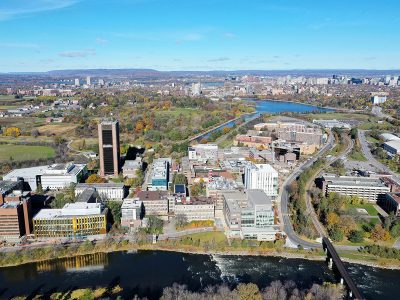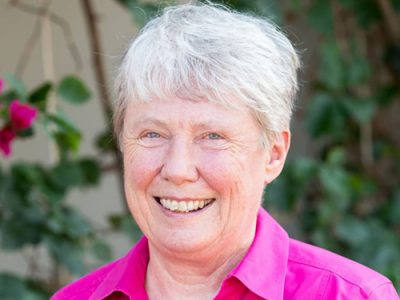Photos Courtesy of Jordan Mallon and Mat Roloson
By Dan Rubinstein
Mat Roloson, an Earth Sciences master’s student at Carleton University, is trying to solve a paleontological mystery that dates back more than 66 million years.
So when pandemic research rules made it impossible for Roloson and his supervisor to fly to Saskatchewan last summer to search for old Triceratops digs, they were fine with spending three days driving west instead.
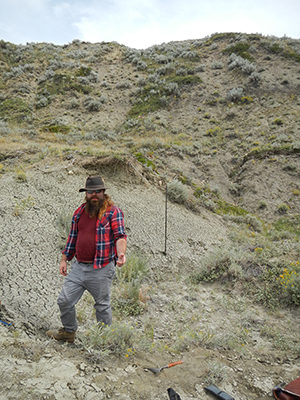
Mat Roloson
“They come out of nowhere,” Roloson says about arriving for the first time in the badlands of southwestern Saskatchewan, where dinosaur bones have been unearthed for decades.
“You’re driving across these endless flats and then all of sudden there are these giant coulees in the ground.”
Some of those coulees contain quarries where the Triceratops skulls that Roloson has been studying in Ottawa were excavated. But the locations of other quarries, documented in weathered field notes and grainy black-and-white photographs, have been lost to time.
Which is why Roloson and Jordan Mallon, a paleobiologist at the Canadian Museum of Nature and an adjunct professor at Carleton, consulted with health authorities, took and passed COVID-19 tests, rented a car and embarked on their August road trip.
“I’d never driven across Canada before,” says Roloson, who spent two weeks in Saskatchewan with Mallon and another three days to get back home.
“It was really cool to see the transitions between all of the different environments.”
Most scientists at the museum didn’t get out into the field last summer, says Mallon. But in this case, they had to go, because his student’s thesis depended on it.
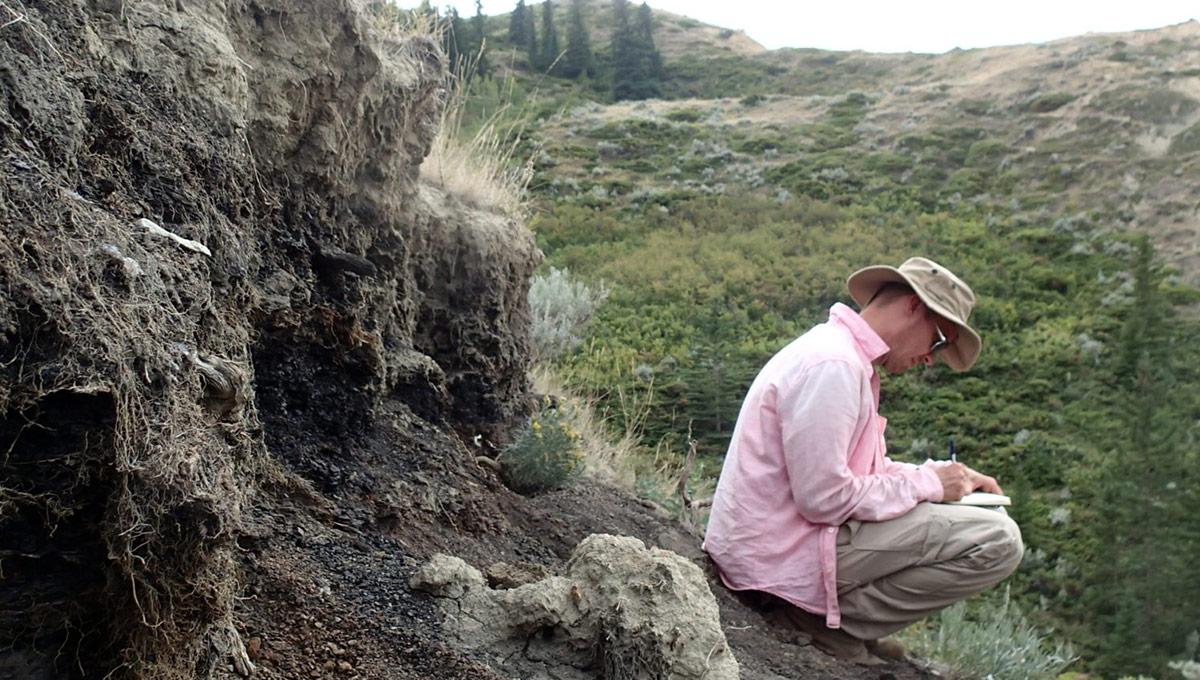
New Species of Triceratops
Between 68 and 66 million years ago, near the end of the Age of the Dinosaurs, one species of Triceratops (Triceratops horridus) on what is now the American side of the border was replaced by a new species (Triceratops prorsus).
Roloson and Mallon are investigating this turnover on the Canadian side of the 49th parallel, trying to determine whether the older Triceratops species gradually evolved into the younger one (a processes known as anagenesis) or if the evolution of this lineage was branched, with different species evolving in different places (a process called cladogenesis).
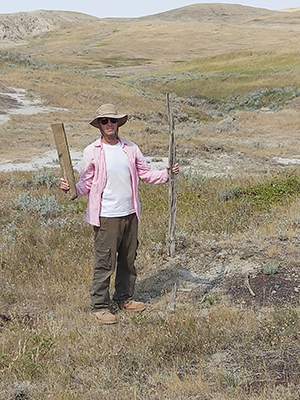
Jordan Mallon
Based on the American fossil record, the first scenario is thought to be true, but Roloson and Mallon are determined to verify whether the Canadian record supports this theory. Although Triceratops fossils have been collected in Canada for nearly 100 years, no one has studied them in detail until now.
Roloson and Mallon have access to Triceratops skulls collected in Saskatchewan between the 1920s and early 2000s that are now in the holdings of the Canadian Museum of Nature, the Royal Saskatchewan Museum and the local history museum in Eastend, Sask.
To advance their research, they have to be able to date the skulls relative to one another. And to do this, they have to find out how deep below the Cretaceous–Paleogene (or K–Pg) boundary — a thin band of rock containing a high percentage of iridium deposited by the meteorite that led to the dinosaur extinction — the skulls were discovered. The deeper it was, the older the specimen.
“Most Triceratops specimens were collected in the U.S. and we know a fair bit about them, but we don’t know much about the Triceratops that were collected in Canada,” says Mallon.
“We need to learn more about them to be able to test the two competing theories of how they evolved.”
All of this work begins, of course, with figuring out where those quarries are. Like the layers of sediment in the earth that contain clues to the past, it’s a mystery within a mystery.
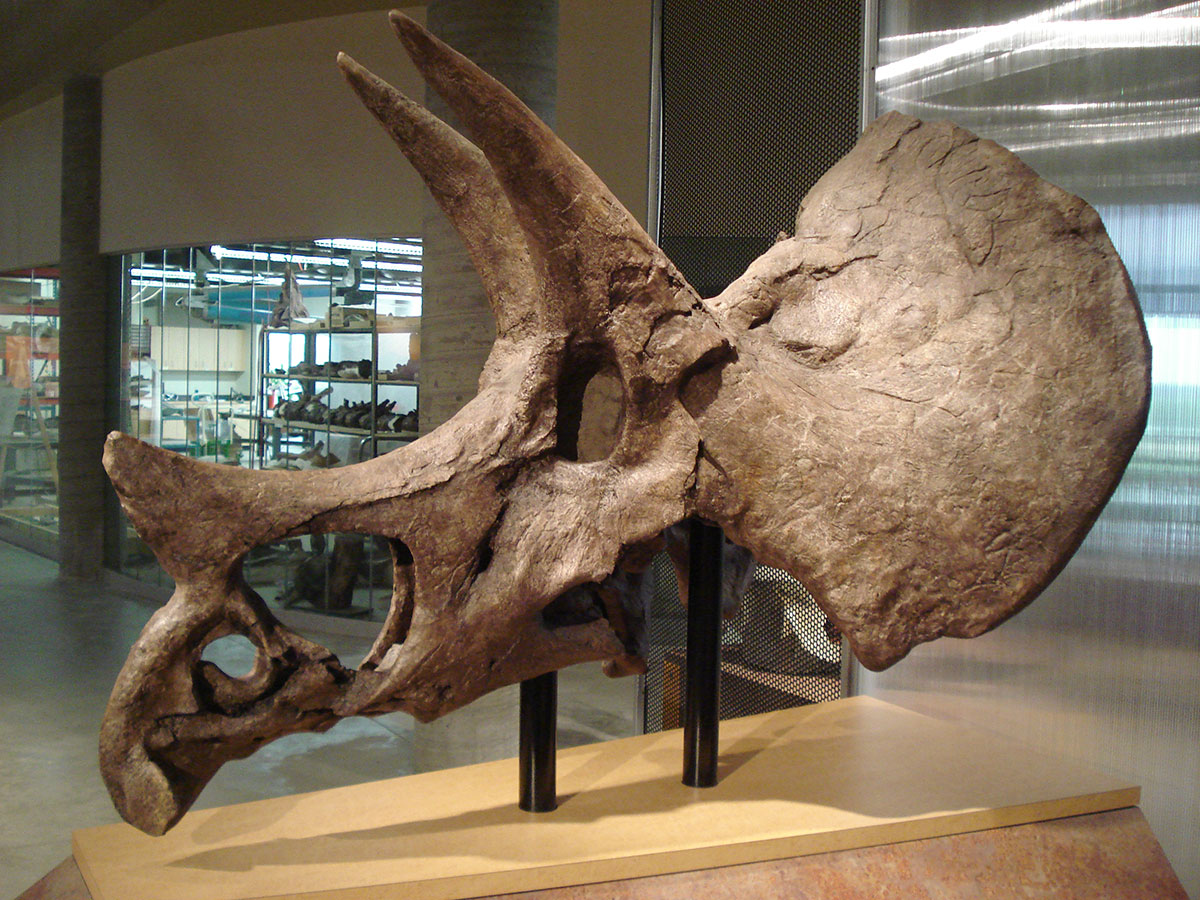
Treasure Hunt for Dinosaur Quarries
When amateur fossil hounds and paleontologists came across dinosaur bones poking out of the eroded slopes of Saskatchewan’s coulees in the early 1900s, they didn’t always document the exact geographic coordinates, nor the position of the bones within the geological column.
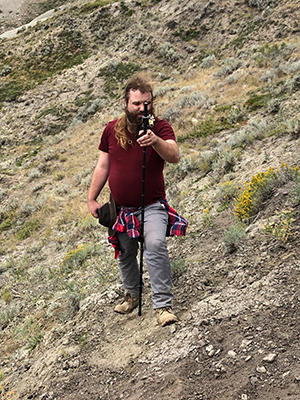 By reading land descriptions from historic field notes, Roloson and Mallon were able to come up with basic GPS coordinates to start their search. They’d put an X on a topographic map and go have a look.
By reading land descriptions from historic field notes, Roloson and Mallon were able to come up with basic GPS coordinates to start their search. They’d put an X on a topographic map and go have a look.
Once on the ground they were able to refine their search by holding up and matching old field photos to the horizon. They knew they had located a century-old quarry by certain telltale signs, including holes in the sides of hills, plaster that was used to encase fossils and pieces of wood from the crates built to transport the heavy fossilized dinosaur discoveries.
“It’s quite like a treasure hunt, trying to use old photos and the scribbled field notes of long-dead paleontologists to locate these forgotten quarries,” says Mallon.
“This was Mat’s first time in the field,” he continues. “As with any new student, it took him a few days to adjust, but he got there. It takes time to strengthen the lungs and develop those calluses.”
With the help of a Parks Canada ranger with a metal detector — some of the work took place within Grasslands National Park — Mallon and Roloson found a rusty key from the lid of what may have been a tin of sardines: somebody’s lunch more than two kilometres from the closest road.
“It’s possible that nobody has been there since,” says Roloson, adding that it takes a lot of work to locate these quarries, “and a lot of luck as well.”
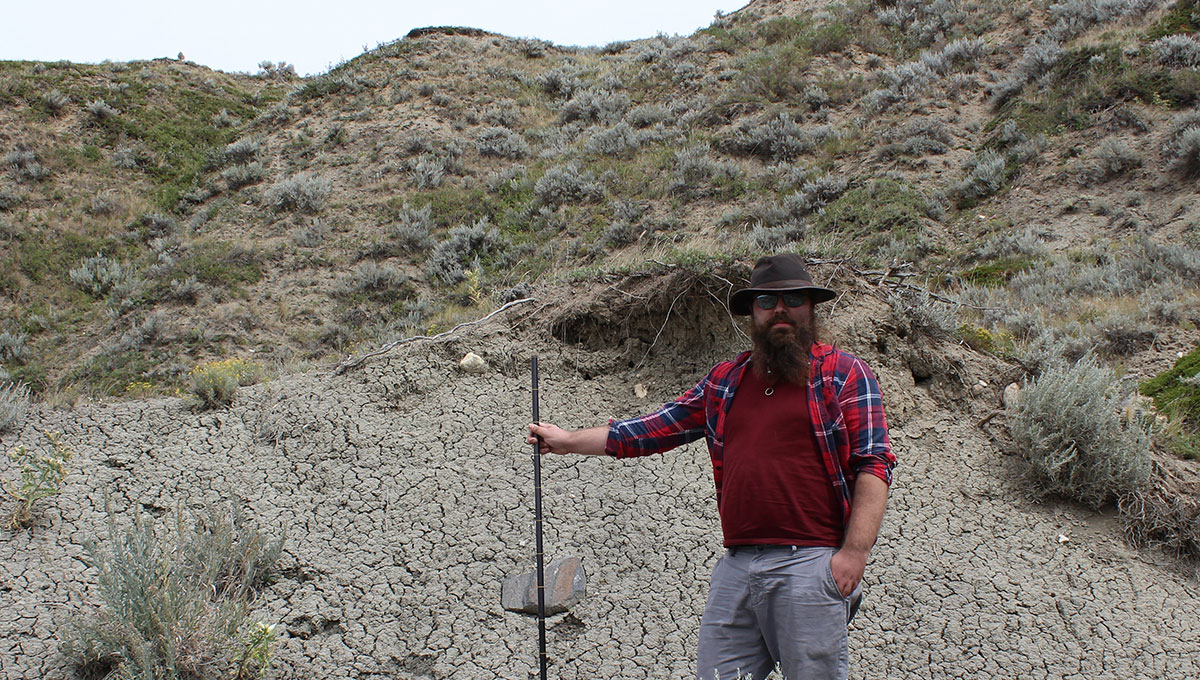
3D Modelling Helps Complete the Puzzle
Back in Ottawa, Roloson is immersed in “skull morphology” — more detective work — as he learns how the shapes of Triceratops skulls up to two metres long changed over time.
Roloson’s master’s thesis, which he is hoping to finish by the summer, explores how Triceratops evolution proceeded within Canada.
“Every student has his or her strengths and brings something different to their research,” says Mallon, explaining how Roloson makes 3D digital models of the skulls.
“In Mat’s case, he’s got a knack for artistry, and his aptitude for 3D computer modelling is exceptional. He’s been nice enough to host a workshop along these lines for the rest of my lab. It’s always great to see your students sharing their talents with one another.”
At the end of the Cretaceous Period, around 66 millions years ago, Triceratops were among the most abundant dinosaurs, so they make an ideal study group for learning about how dinosaurs were evolving in the lead-up to their final extinction.
“The questions present themselves over time,” Roloson says about his research.
“It’s not always about the species or the specimen you’re studying — it’s the questions and ideas that emerge.”
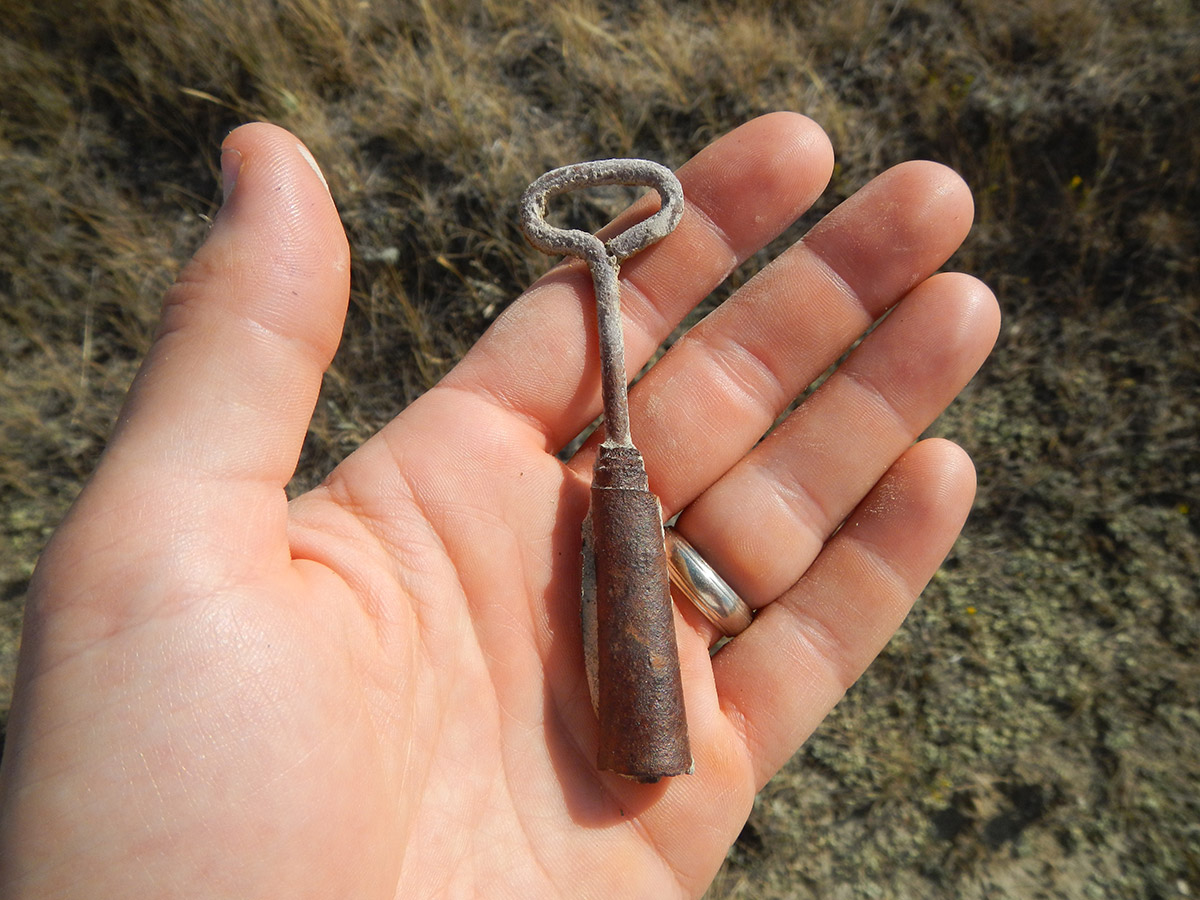
Tuesday, January 26, 2021 in Earth Sciences, Graduate Students
Share: Twitter, Facebook
